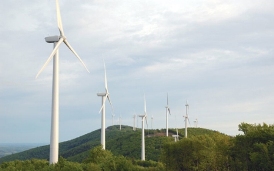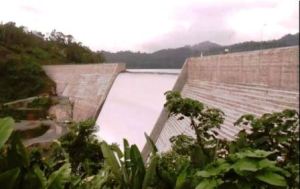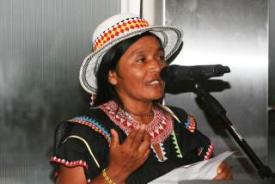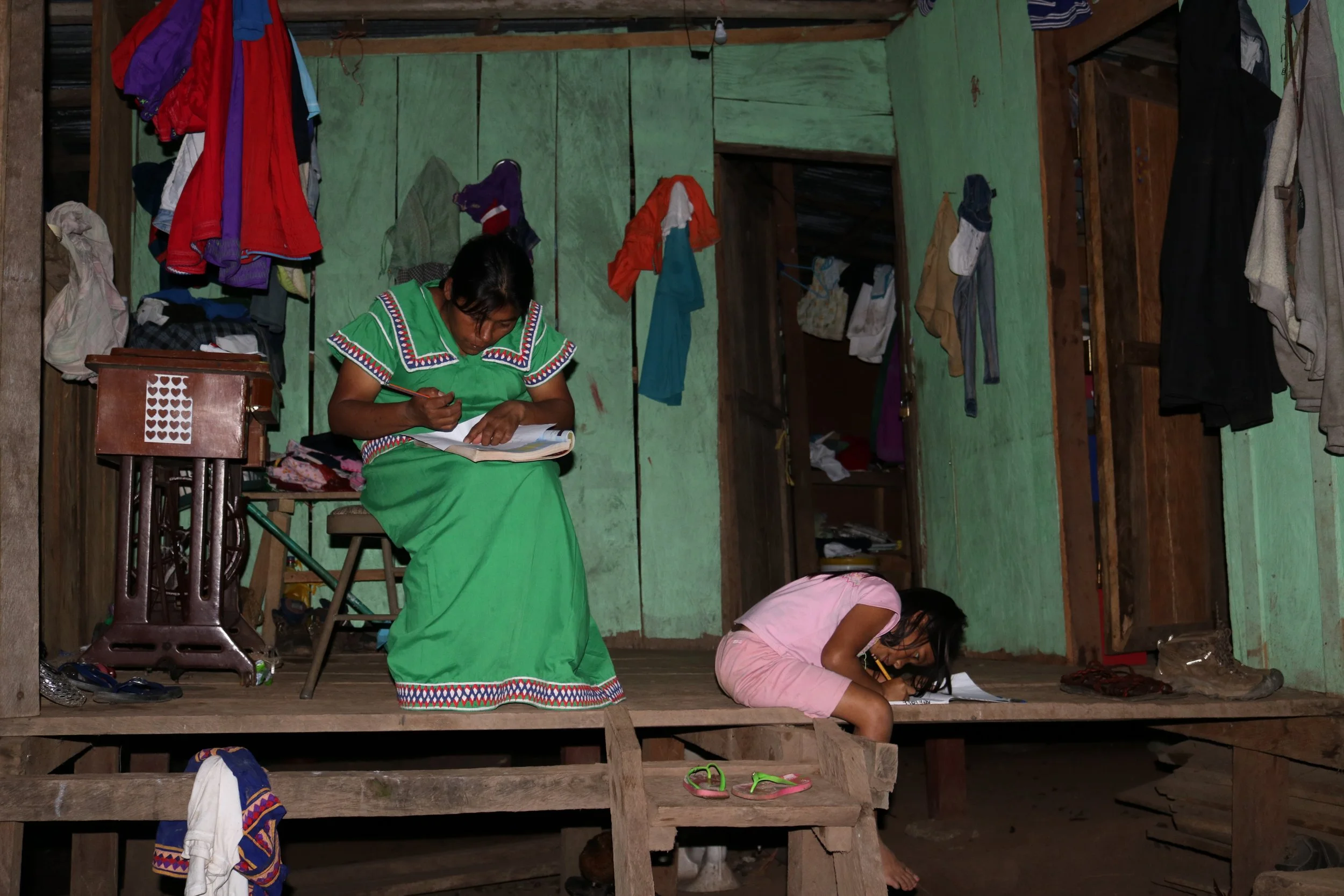In the latest from the Few for Change blog, Co-Director Brooks Winner discusses the impact of hydroelectric dams on the Ngöbe people and how they have fought to protect their communities.
Clean. Renewable. Green. What images come to mind when you hear these words together? Wind turbines spinning slowly above rolling hills? Solar panels on a rooftop, collecting energy from the sun to power a home? An electric car rolling silently down a city street? These are the types of symbols that many in the U.S. have come to associate with renewable energy; pastoral, idyllic, beautiful images that evoke visions of a better, brighter future free from polluting fossil fuels.
Now let me run another image by you: a valley, recently flooded, filled with water that covers an entire village, leaving the tops of thatched roof houses as the only signs of the community that once thrived here.
Doesn't sound so green to you? For the people of the Comarca Ngöbe-Buglé, this is the reality of renewable energy. Giant hydroelectric dams such as the Barro Blanco dam are popping up throughout western Panama, destroying entire communities and ecosystems. Rather than conjure images of hope and opportunity, these renewable energy projects leave paths of destruction. Instead of brighter futures, they bring shattered pasts and unsettled presents.
In February 2012, a group of Ngöbe decided to fight back against the development of these projects. Having seen their neighbors flee their homes to escape the flooding of the Changuinola River during construction of the Chan 75 dam, a group of protesters demanded a meeting with the Panamanian government to voice their concerns about the Barro Blanco hydroelectric project. The dam would flood a large portion of the Tabasara River Valley, impacting several upriver communities and destroying habitat of rare and endangered species including the Tabasara rain frog, a species endemic to that area. When the government refused to meet with them, the protesters blockaded stretches of the Inter-American Highway in an attempt to slow down construction crews and force the government to negotiate. (Al Jazeera)
The response from the government was sudden and brutal. Police in riot gear used shotguns, tear gas, and pepper spray to disperse the crowd, killing two young protesters in the melee. The government shut down all cell phone service to the area, essentially cutting off all communication with the outside world. The administration of President Ricardo Martinelli granted full immunity to the police involved, so the deaths of the protesters were never investigated, and the Minister of the Panamanian Government, Jorge Ricardo Fabrega, defended the officers' actions. "It was very unfortunate events," said Fabrega, "but I believe that the police acted very professionally." (Aljazeera)
For more information on the protests, check out Panama: The Village of the Damned, a short documentary from Al Jazeera by filmmaker Glen Ellis.
As a result of the protests, the Panamanian Government agreed to negotiate with Silvia Carrera, the "Cacica" (chief, leader) of the Ngöbe. After a week of negotiations, the government agreed to give the governing body of the Ngöbe, the General Council, the right to approve or reject any hydroelectric project within the Comarca. However, the Barro Blanco hydroelectric dam and three others became sticking points in the negotiations. A territorial ambiguity was at the center of the debate; these projects are outside of the original Comarca borders, but surrounded by mostly Ngöbe communities and considered "Annexed areas" of the Comarca. What that means, politically, is unclear. Moreover, the Barro Blanco hydroelectric dam concession had already been granted to a company, and the national government was loathe to rescind the offer. The United Nations had already awarded millions of dollars in carbon credits, recognizing the project as a green, emissions-free energy source. In the end, after spending weeks away from their homes, the protesters won a freeze on the construction of the dam, signed the law to protect the concessions they had already won, and agreed to have another environmental assessment done and resume negotiations afterwards.
This was a very important victory for the Ngöbe, but its implications for the future are uncertain. The Panamanian Government has repeatedly broken promises made to the Ngöbe and continues to stress the importance of exploring renewable energy alternatives to meet the ever growing demand in Panama and throughout Central America. This is an admirable goal, but it should not come at the expense of the marginalized rural communities (like those of the Comarca) in which much of the renewable resource potential is located. Unfortunately, the people of these communities are not the ones who have benefited from such projects in the past. The jobs, schools, scholarships, and other economic benefits promised by dam developers rarely materialize. Very few of these communities have electricity and electrifying them is not often included in the plans for these projects. Much of the power is sold to other countries, so the dams have therefore failed to reduce electric rates within Panama, another supposed benefit of such projects. The profits from energy and carbon credit sales go to the owners of the dams, usually foreign companies or the Panamanian elite, and are not reinvested in the impacted communities. This is why the Ngöbe perceive renewable energy not as a ray of hope for a brighter future, but as a rising tide that threatens their homes and their livelihoods.
In granting the Ngöbe General Council power to review any proposed hydroelectric project, the Panamanian government has taken a positive step towards ensuring that future renewable energy projects benefit local communities and not just project developers. It should honor this agreement and use energy projects to uplift and empower the communities of rural Panama.
*Thanks to Few for Change Co-Director Gillian Locascio for her contributions to this post and her fact checking.


















